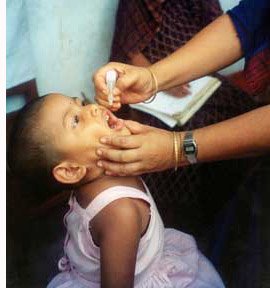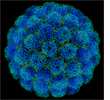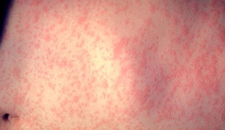In the wisdom of modern medicine, we have created vaccines to “pre-build memory” for our immune systems — memories of significant diseases we have never had, such as measles, mumps, polio, diphtheria, small pox, etc. Vaccines contain a weakened sterilized version of microorganisms (or proteins from those microorganisms) that is capable of producing an immune response in the body without inducing a full-blown onset of the disease itself. Although vaccines have played a significant role in helping reduce the number of deaths among children, this benefit has not come without cost.
As I mentioned in Lessons from the Miracle Doctors, I have a strong emotional attachment to this issue, which makes it impossible for me to be objective. My youngest brother, Peter, was one of those “small percentage” of children who responded badly to the series of immunization shots he received back in the early 60s. I was there after the first two shots when he ran high fevers and cried all night. I was there when my mother called the pediatrician each time, only to be reassured that it was nothing to worry about. And I was there after the third shot, when my mother and I took turns holding Peter and rocking him to try and comfort him as he screamed at the top of his lungs for hours on end, ran a fever of 105, and convulsed. As it turns out, the pediatrician was wrong. My brother, along with thousands of other children (unfortunately, even a small percentage, when applied to a large number, still equals thousands of children), reacted to the shots that ultimately left him severely retarded. Although the manufacturer of the vaccine had indications that this was a possibility, they had not made it clear to the pediatricians who used it. Also, before 1990, doctors were not legally obligated to report adverse reactions to vaccines to the Centers for Disease Control; and, even with the current legal obligation, it’s estimated that only 10% of doctors report the damage they see to the CDC. This sort of reaction to a vaccine and this sort of irresponsibility by a pharmaceutical company are not as anomalous as you might think.
Paralytic Polio
 The polio vaccine is considered one of the great success stories of modern medicine. Maybe yes, maybe no! Jonas Salk testified before a Senate subcommittee that since 1961, except for a few importations from other countries, all cases of polio have been caused by the Oral Polio Vaccine. In fact, over a number of years, Jonas Salk and Albert Sabin each accused the other’s vaccine of causing polio. Unfortunately, they were both right!
The polio vaccine is considered one of the great success stories of modern medicine. Maybe yes, maybe no! Jonas Salk testified before a Senate subcommittee that since 1961, except for a few importations from other countries, all cases of polio have been caused by the Oral Polio Vaccine. In fact, over a number of years, Jonas Salk and Albert Sabin each accused the other’s vaccine of causing polio. Unfortunately, they were both right!
First, Jonas Salk’s vaccine was responsible for one of the worst pharmaceutical disasters ever. Just two weeks after the release of his “miracle” polio vaccine, a series of telephone calls about a strange outbreak of paralysis in children in California started pouring in. In each case, paralysis occurred in the arm that was inoculated with Salk’s vaccine, and in each case the vaccine was made by Cutter Laboratories. Cutter’s vaccine was immediately recalled, but 380,000 doses had already been administered — mostly to healthy first- and second-graders. Within months, the Communicable Diseases Center in Atlanta found that Cutter’s vaccine had caused 40,000 cases of mild polio, 200 cases of permanent paralysis, and 10 deaths. It was one of the worst pharmaceutical disasters in American history.
But the Salk vaccine was not alone in causing polio. Salk was correct when he implicated the Sabin oral vaccine in causing polio. The oral polio vaccine contains a weakened version of the poliovirus, activating an immune response in the body. As it turns out, in rare instances, the virus in the vaccine can mutate into a form that can paralyze. When this virus regains the ability to circulate, it is called a circulating vaccine-derived poliovirus (cVDPV). As I said, it is rare — about 200 cases in the US over the last decade. But if you’re one of those cases, rare doesn’t matter.
And finally, there is strong evidence that the original polio epidemic itself in the late 1940s was caused (or at least greatly exacerbated) by another vaccine. The early triple vaccine against diphtheria, whooping cough, and tetanus has been shown beyond doubt to cause paralytic polio in some children to whom it was administered. The incidence of polio in children vaccinated with this shot was statistically greater than in unvaccinated children. This scandal broke in Britain during 1949, an epidemic year for polio; other reports soon followed from Australia.
SV40
 But it’s not just polio, there’s also SV40, the monkey virus. The polio vaccine that was given to children in the 50s and 60s was not as sterilized as originally thought. In fact, when better test equipment was later used, it was found that there were over 140 live viruses in those early versions of the polio vaccine. This is not speculation. A 1999 study affirmed that unique strains of SV40 in commercial polio vaccines from 1955 were not readily identifiable with then current testing for SV40 infection. With what result? Well for one thing, SV40 is strongly implicated in a number of cancers, including brain cancer.
But it’s not just polio, there’s also SV40, the monkey virus. The polio vaccine that was given to children in the 50s and 60s was not as sterilized as originally thought. In fact, when better test equipment was later used, it was found that there were over 140 live viruses in those early versions of the polio vaccine. This is not speculation. A 1999 study affirmed that unique strains of SV40 in commercial polio vaccines from 1955 were not readily identifiable with then current testing for SV40 infection. With what result? Well for one thing, SV40 is strongly implicated in a number of cancers, including brain cancer.
In 2002, three leading SV40 experts (Drs. Gazdar, Butel and Carbone) published their findings that SV40 should be included in the list of group 2A carcinogens. For perspective, Group 2A includes: Human papilloma virus and Kaposi’s sarcoma herpes virus/human herpes virus.
In their book, The Virus and the Vaccine: The True Story of a Cancer-Causing Monkey Virus, Contaminated Polio Vaccine, and the Millions of Americans Exposed, Debbie Bookchin and Jim Schumacher state that between 1997 and early 2003, more than 25 published studies found SV40 in human mesotheliomas; 16 others found the virus in brain and bone cancers, lymphomas, and other cancers, and in kidneys and peripheral blood. As of 2003, SV40 had been found in human tumors in 18 developed countries. Bookchin and Schumacher claim that the rates of SV40-positive tumors seem highest in countries that used the greatest amount of contaminated Salk polio vaccine, including the UK, USA, and Italy.
Thimerosal
In addition to the “active” part of the vaccine, the vaccine includes substances such as ethylene glycol (antifreeze), formaldehyde (a known carcinogen), and aluminum…and, of course, thimerosal, the mercury based preservative.
Every couple of months, a new study or medical pronouncement is released “claiming” that thimerosal is safe. But the claims of safety are inaccurate or misleading.
Recently, for example, an Argentinean study was released that found, “the levels of thimerosal [in childhood vaccinations] don’t go very high and they go down right away. By the time it’s time for the next dose of vaccine, the levels are right back to where they were at the beginning.” The study found that the half-life of ethyl mercury in the blood — the time it takes for the body to get rid of half the mercury, and then another half, and so on — was 3.7 days. That’s significantly less than the half-life of methyl mercury, the kind found in fish, at 44 days. Bottom line: according to the study’s authors, the study proved that the controversial mercury-containing preservative thimerosal is rapidly excreted from babies’ bodies and can’t build up to toxic levels.
Unfortunately, the data showed no such thing.
According to the study’s methodology, the infants in the study were put into three age groups and their blood-mercury levels were tested both before and after vaccinations were given to newborns, and at their two- and six-month checkups.
Excuse me, but let’s use our brains here for a moment — assuming they haven’t been damaged by exposure to mercury.
Just because blood levels of mercury drop doesn’t necessarily mean that the mercury has been excreted from the body — only that it has left the bloodstream. Those are two very different conclusions. Since the study didn’t monitor urine levels of mercury, there’s no way to tell if it left the body. In fact, experience tells us that mercury does not easily leave the body, that it in fact “electrically binds” with soft tissue, bones, and even brain matter. If anything, the study should potentially raise alarm bells — indicting that ethyl mercury binds with cellular tissue and locks into the body far faster than methyl mercury. Without the urine testing, there’s no way to know.
Bottom line: Mercury does not easily “metabolize” and pass out of the body. It remains for years and years locked to body tissue. If you want to get rid of it, you have to chelate it out. Make no mistake, this study has not proven thimerosal safe. It may not cause autism, but that doesn’t mean that it’s safe.
In fact, it’s no secret that mercury is one of the most toxic metals known. Numerous studies have shown its impact on health. There is strong evidence that mercury lowers T-Cell counts. This, alone, implicates it in cancer, autoimmune diseases, allergies, Candida overgrowth, and multiple sclerosis. In fact, due to other studies that showed mercuric chloride increased several types of tumors in rats and mice, and methyl mercury caused kidney tumors in male mice, the EPA has determined that mercuric chloride and methyl mercury are possible human carcinogens. It has also been shown that mercury cuts the oxygen carrying capacity of blood by half. This would account for many instances of chronic fatigue.
Mercury also has an affinity for brain tissue and is implicated in brain tumors and dementia (think mad as a hatter). And, finally, mercury has an affinity for fetal tissue, which accounts for its implication in birth defects. In 2002, the National Academy of Sciences found strong evidence for the toxicity of methyl mercury to children’s developing brains, even at low levels of exposure. A 2005 study from the Centers for Disease Control found that as many as 637,233 American children are born each year with mercury levels of more than 5.8 µg/L (5.8 micrograms per liter), the level associated with brain damage and loss of IQ.
To be sure, some study may ultimately prove that injecting infants with the second most toxic metal known to man (just behind plutonium) is safe, but no study so far has proven that — not by a long shot (all puns intended)..
And of course, there is the recent court ruling on Hannah Poling that found that the vaccinations she received “significantly aggravated an underlying mitochondrial disorder, which predisposed her to deficits in cellular energy metabolism, and manifested as a regressive encephalopathy with features of autism spectrum disorder.”
VICP
 On October 1, 1988, the National Childhood Vaccine Injury Act of 1986 (Public Law 99-660) created the National Vaccine Injury Compensation Program (VICP). Officially, the VICP was established to ensure an adequate supply of vaccines, stabilize vaccine costs, and establish and maintain an accessible and efficient forum for individuals found to be injured by certain vaccines. In reality, it was designed to protect vaccine manufacturers from lawsuits so that they would not feel “legally” constrained in their ability to produce vaccines as necessary. Indeed, it was established in response to a liability crisis centering around children’s vaccines — specifically, the same DTP immunization shots which had destroyed my brother’s brain some years earlier. The VICP is a no-fault alternative to the traditional tort system for resolving vaccine injury claims that provides compensation to people found to be injured by certain vaccines.
On October 1, 1988, the National Childhood Vaccine Injury Act of 1986 (Public Law 99-660) created the National Vaccine Injury Compensation Program (VICP). Officially, the VICP was established to ensure an adequate supply of vaccines, stabilize vaccine costs, and establish and maintain an accessible and efficient forum for individuals found to be injured by certain vaccines. In reality, it was designed to protect vaccine manufacturers from lawsuits so that they would not feel “legally” constrained in their ability to produce vaccines as necessary. Indeed, it was established in response to a liability crisis centering around children’s vaccines — specifically, the same DTP immunization shots which had destroyed my brother’s brain some years earlier. The VICP is a no-fault alternative to the traditional tort system for resolving vaccine injury claims that provides compensation to people found to be injured by certain vaccines.
To date, over $1.5 billion has been paid out (post-1988 and pre-1988). That’s a surprisingly large number for injuries caused by vaccines promoted as perfectly safe — and it doesn’t begin to tell the real story. As it turns out, over 75% of all claims for permanent immune system and brain damage following immunization of the mandated vaccines are rejected for payment by the fund. That would put the true cost in the US alone at over $6 billion dollars, not to mention the far larger number of people who do not even know the fund exists and, therefore, never file at all. Total it up and you’re now looking at a rather frighteningly high injury cost for “safe, mandated childhood vaccinations.”
Note: On average, in the United States, children are now required to receive some 33 doses of 9 different vaccines in order to attend school.
The success of vaccines
Okay, we’ve dealt with the myth that vaccines are perfectly safe and looked at their downside. But there is also a myth that vaccines do not work, and that is equally untrue.
- 12 vaccine preventable diseases and disease rates have been reduced by 99% in the U.S. These include mumps, measles, diphtheria, whooping cough/pertussis, and tetanus to name a few.
- 50 years ago in the United States, polio paralyzed more than 16,000 children and killed nearly 2,000 annually. That doesn’t happen any more
- The Global Polio Eradication Initiative, spearheaded by the World Health Organization, Rotary International, the CDC and UNICEF, was begun in 1988. That year, an estimated 350,000 children were paralyzed with polio worldwide; in 2004, polio cases had fallen to just over 1,200 cases globally.
- And Smallpox.
On the other hand, much of this success may not be related to vaccinations at all. Statistical evidence clearly indicates that the mortality rates of most of the diseases that vaccines have claimed victory over were already dropping precipitously even before the vaccine was introduced. In fact, in most cases, you can’t even notice a statistical blip after the introduction of vaccines. To be fair, mortality rates are not the same as incidence rates and can be reflective of better medical care.
Parents opting out of immunization
There is now a fairly substantial movement of parents who wish to avoid childhood immunizations. To be sure, all states except Mississippi and West Virginia allow a religious exemption to vaccination for those people who hold a sincere religious belief opposing vaccination such that it would be an infringement on their right to exercise their religious beliefs. Some 20 states also allow exemptions for parents whose “personal beliefs” prompt them to skip vaccination for their children. In 1991, approximately 1% of children in the US went unvaccinated. By 2004, that number was up to 2.5%. At first glance, 2.5% might not seem like a big deal, but with approximately 40 million children under the age of 10, you’re talking upwards of 1 million unvaccinated children.
The downside
Yes, there is a downside. One of the main reasons that parents can successfully opt their children out of vaccination programs is because those programs have been somewhat successful.
 Last month in San Diego, 12 kids fell ill with the measles, a once common childhood disease now rarely seen in this country. Nine of the kids had skipped vaccination because their parents objected; the other three were too young to receive the vaccine. As Dr. Mark Sawyer, a pediatrician and infectious disease specialist at Rady Children’s Hospital in San Diego, told the New York Times, “The very success of immunizations has turned out to be an Achilles’ heel. Most of these parents have never seen measles, and don’t realize it could be a bad disease so they turn their concerns to unfounded risks. They do not perceive risk of the disease but perceive risk of the vaccine.”
Last month in San Diego, 12 kids fell ill with the measles, a once common childhood disease now rarely seen in this country. Nine of the kids had skipped vaccination because their parents objected; the other three were too young to receive the vaccine. As Dr. Mark Sawyer, a pediatrician and infectious disease specialist at Rady Children’s Hospital in San Diego, told the New York Times, “The very success of immunizations has turned out to be an Achilles’ heel. Most of these parents have never seen measles, and don’t realize it could be a bad disease so they turn their concerns to unfounded risks. They do not perceive risk of the disease but perceive risk of the vaccine.”
On the other hand, Dr. Sawyer would have a harder time using lack of immunization as an excuse for an outbreak of mumps in 2006 that infected over 400 people, considering that all but one of the infected Kansas students had received two doses of the Measles/Mumps/Rubella vaccine.
And then, of course, a whooping cough outbreak in Children’s Hospital in Boston in 2006, also had nothing to do with lack of immunizations, but rather, appears to have been caused by a surgeon who contracted the disease while on military reserve duty and brought it back to the hospital.
Conclusion
So where does that leave us?
In opposing ideological war rooms, we find the anti-vaccination movement that sees no benefit in any vaccination program and the medical establishment that believes, like Dr. Sawyer, that no possible vaccine should be left unused. And on the actual battlefield, we find parents like Sybil Carlson, who is quoted in the NYT article as saying, “I refuse to sacrifice my children for the greater good” opposed by government bureaucrats who look to mandate an ever increasing number of questionable vaccines.
What to do? What to do? What to do?
Unfortunately, the answer is not clear cut. And even what is known is far more nuanced than black and white. Even Mr. Spock’s logical dictum from Star Trek “The needs of the many outweigh the needs of the few” is not black and white in this case. Why? Consider what we’ve discussed.
- Yes, you can make the case that childhood vaccinations have dramatically helped to reduce infant mortality.
- On the other hand, statistical evidence shows that they deserve far less credit for reducing this mortality than they receive.
- And yes, as Mr. Spock would say, society has the right to protect itself from massive outbreaks of disease even if a small percentage of children are harmed.
- But do society’s representatives have the right to deliberately lie about the dangers inherent in mandated vaccinations?
- And where does it stop? Does the government have the right to mandate that preschoolers get vaccinated for the flu every year, or for HPV, or even for HIV before a vaccine is even proven to work?
- And what do you tell the thousands of children throughout the world (as small as the percentage might be) when their brains are destroyed, or they get cancer, or asthma? What should I have told my brother, whom I was very close to, before he passed away — that he died for the greater good?
Look, I’m not saying vaccines should be eliminated (besides, that’s not going to happen anyway) — just that we should use a lot more discrimination than we are at the moment in their application. Eventually, it’s possible that new techniques of genetic engineering, by being able to totally isolate the offending antigen, may be able to offer a safer form of vaccine. But until that day…
- We need to be a lot more selective as to which vaccines are mandated and which are discretionary.
- We need to remove any ingredients like Thimerosal that give rise to any question concerning their safety. Wasting time on studies “proving” that thimerosal may not cause autism is unconscionable. Let’s get real here. Mercury is one of the most toxic substances known to man. Its effects are cumulative. It doesn’t easily leave the body. Just because it may not cause autism doesn’t mean it isn’t slowly killing you. Thimerosal can be easily replaced in any vaccine. Not doing so undermines any credibility the medical community has regarding their concern for public safety.
- We need to have full disclosure on the true benefits of vaccination programs — not the inflated propaganda numbers currently touted. And we need full disclosure concerning the side effects and resultant injuries.
- And finally, we need to update programs like the VICP that keep their figures artificially rosy by rejecting ¾ of all injury claims.
And for those of you who choose not to immunize your children, there is a cautionary that may alter the equation. As long as most of the children in your neighborhood are getting immunized, then the likelihood of your child contracting a serious childhood illness is minimal — and in most first world countries that has been true for some time. But with the increase in globalization, the increase in travel from third world countries as economies shift, the increase in immigration from poorer to wealthier countries, that protective cocoon is disappearing. Every day, the risk of exposure to long absent childhood diseases is increasing. You now have to weigh that increasing, but unknown, risk against the very real risks inherent in many of the vaccines now available that might offer a modicum of protection. And that’s your call — not mine, nor the government’s (at least for now).












I grew up healthy and has no
I grew up healthy and has no hospitalization experience. I never had any of those vaccines since I was born because my mom doesnt want me too. But too bad I never had a full knowledge about the bad side effects of vaccines. I wish I was able to read this before.
I need to have vaccinations for my visa, and so I did. I wish I’d rejected the shot, but too late for me, Im one of those unlucky persons who have to deal with vaccines side effects, Im a nurse and currently unemployed for a year now because of being sick. My nervous system is so weak, my whole body is easily numb even my head, I have body malaise, irregular periods, blurred visions, bone weakness , I also have muscle spasm all over my body and was really stress about my degenerating health condition that always put me in sleepless nights and anxieties. I am so frustrated most of the time of my anxieties, it so bad that sometimes I cannot control it, clearly my nerves are all acting weird! I dont have all of this health issues before!
All I wanted right now is to give my life back and my old self who is healthy and can endure a lot of duties as a nurse. Because right now Im still trying my very best to make myself healthy again so I could keep going with my life. I been stagnant for a year! 😐
This article should be published in tabloids and everywhere to open up the minds of many people about the serious issues of vaccines’!!!